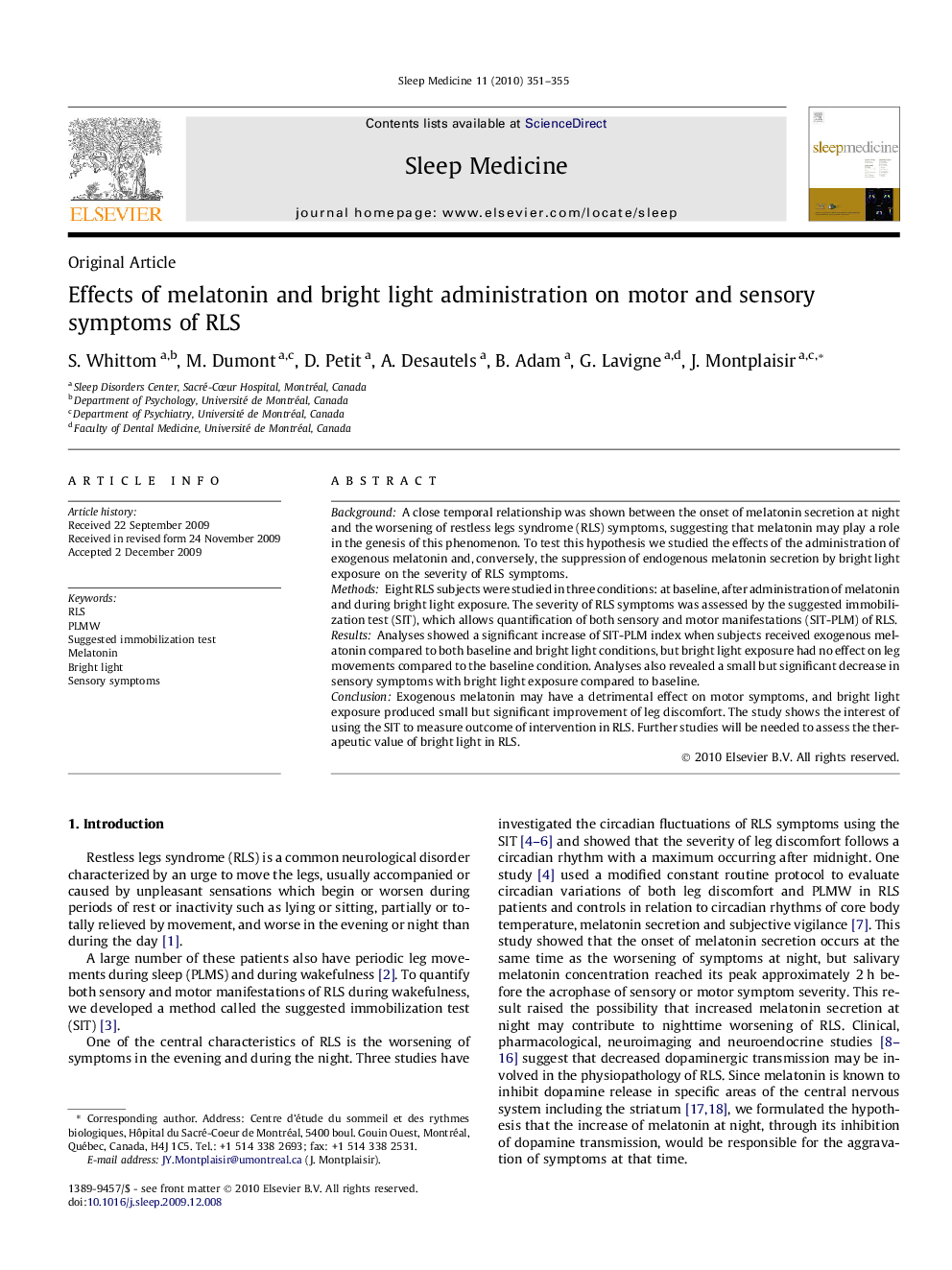| Article ID | Journal | Published Year | Pages | File Type |
|---|---|---|---|---|
| 3177616 | Sleep Medicine | 2010 | 5 Pages |
BackgroundA close temporal relationship was shown between the onset of melatonin secretion at night and the worsening of restless legs syndrome (RLS) symptoms, suggesting that melatonin may play a role in the genesis of this phenomenon. To test this hypothesis we studied the effects of the administration of exogenous melatonin and, conversely, the suppression of endogenous melatonin secretion by bright light exposure on the severity of RLS symptoms.MethodsEight RLS subjects were studied in three conditions: at baseline, after administration of melatonin and during bright light exposure. The severity of RLS symptoms was assessed by the suggested immobilization test (SIT), which allows quantification of both sensory and motor manifestations (SIT-PLM) of RLS.ResultsAnalyses showed a significant increase of SIT-PLM index when subjects received exogenous melatonin compared to both baseline and bright light conditions, but bright light exposure had no effect on leg movements compared to the baseline condition. Analyses also revealed a small but significant decrease in sensory symptoms with bright light exposure compared to baseline.ConclusionExogenous melatonin may have a detrimental effect on motor symptoms, and bright light exposure produced small but significant improvement of leg discomfort. The study shows the interest of using the SIT to measure outcome of intervention in RLS. Further studies will be needed to assess the therapeutic value of bright light in RLS.
